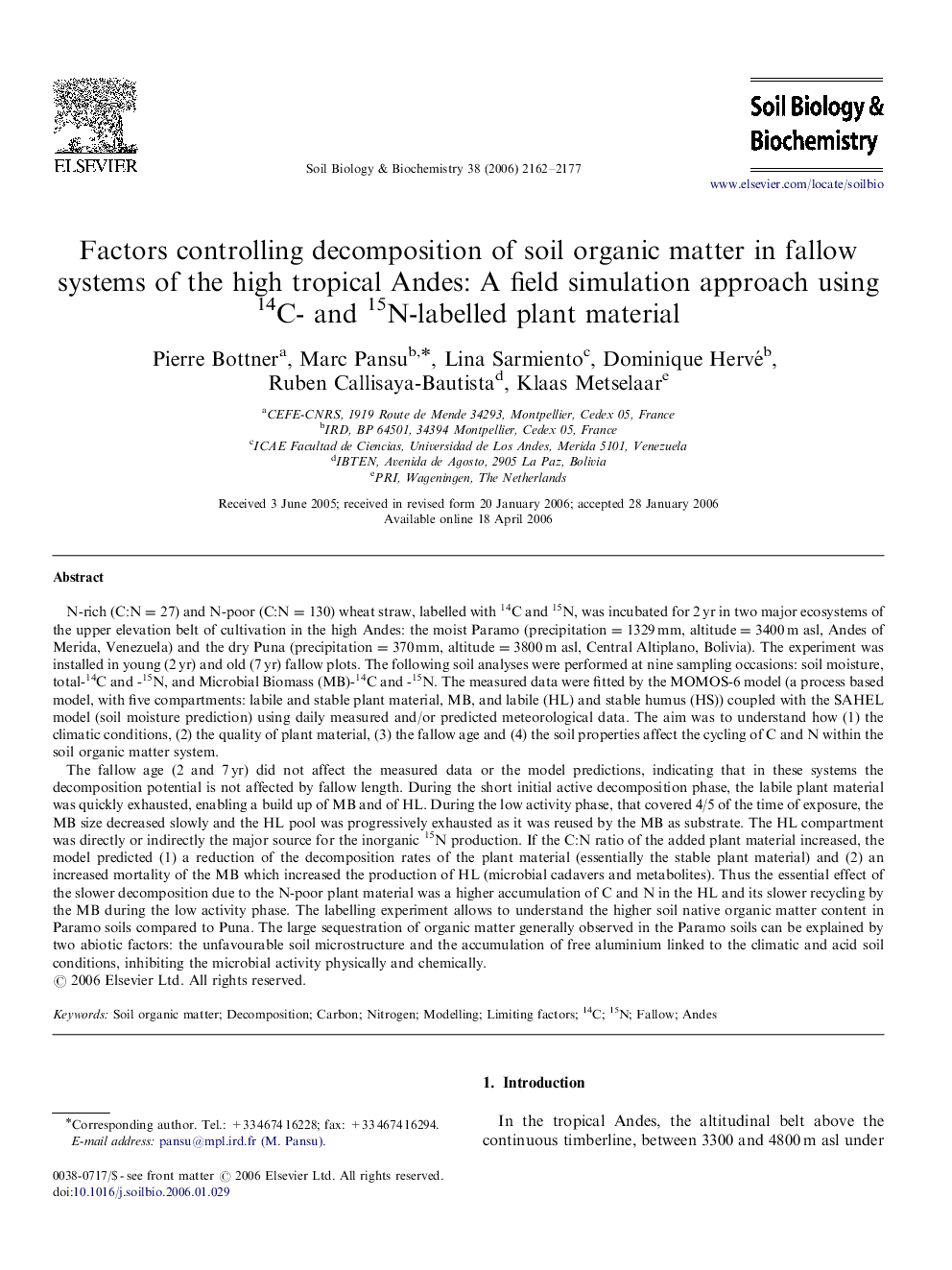| Article ID | Journal | Published Year | Pages | File Type |
|---|---|---|---|---|
| 2027182 | Soil Biology and Biochemistry | 2006 | 16 Pages |
Abstract
The fallow age (2 and 7Â yr) did not affect the measured data or the model predictions, indicating that in these systems the decomposition potential is not affected by fallow length. During the short initial active decomposition phase, the labile plant material was quickly exhausted, enabling a build up of MB and of HL. During the low activity phase, that covered 4/5 of the time of exposure, the MB size decreased slowly and the HL pool was progressively exhausted as it was reused by the MB as substrate. The HL compartment was directly or indirectly the major source for the inorganic 15N production. If the C:N ratio of the added plant material increased, the model predicted (1) a reduction of the decomposition rates of the plant material (essentially the stable plant material) and (2) an increased mortality of the MB which increased the production of HL (microbial cadavers and metabolites). Thus the essential effect of the slower decomposition due to the N-poor plant material was a higher accumulation of C and N in the HL and its slower recycling by the MB during the low activity phase. The labelling experiment allows to understand the higher soil native organic matter content in Paramo soils compared to Puna. The large sequestration of organic matter generally observed in the Paramo soils can be explained by two abiotic factors: the unfavourable soil microstructure and the accumulation of free aluminium linked to the climatic and acid soil conditions, inhibiting the microbial activity physically and chemically.
Related Topics
Life Sciences
Agricultural and Biological Sciences
Soil Science
Authors
Pierre Bottner, Marc Pansu, Lina Sarmiento, Dominique Hervé, Ruben Callisaya-Bautista, Klaas Metselaar,
